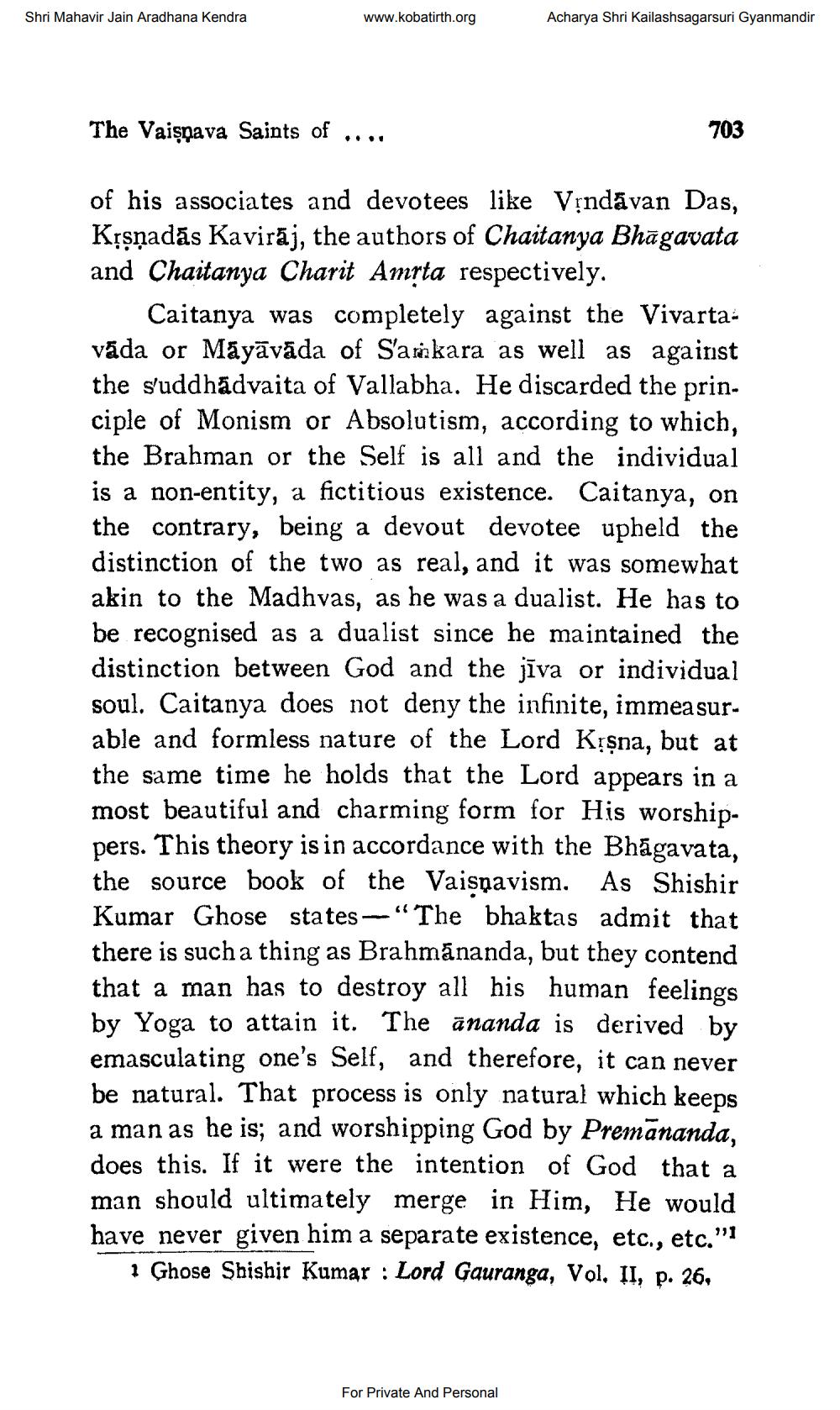________________
Shri Mahavir Jain Aradhana Kendra
www.kobatirth.org
Acharya Shri Kailashsagarsuri Gyanmandir
The Vaişņava Saints of ....
703
of his associates and devotees like Vrndāvan Das, Kțşņadās Kavirāj, the authors of Chaitanya Bhagavata and Chaitanya Charit Amrta respectively.
Caitanya was completely against the Vivartavāda or Māyāvāda of Samkara as well as against the s'uddhādvaita of Vallabha. He discarded the principle of Monism or Absolutism, according to which, the Brahman or the Self is all and the individual is a non-entity, a fictitious existence. Caitanya, on the contrary, being a devout devotee upheld the distinction of the two as real, and it was somewhat akin to the Madhvas, as he was a dualist. He has to be recognised as a dualist since he maintained the distinction between God and the jīva or individual soul. Caitanya does not deny the infinite, immeasurable and formless nature of the Lord Kļşna, but at the same time he holds that the Lord appears in a most beautiful and charming form for His worshippers. This theory is in accordance with the Bhagavata, the source book of the Vaisnavism. As Shishir Kumar Ghose states "The bhaktas admit that there is such a thing as Brahmananda, but they contend that a man has to destroy all his human feelings by Yoga to attain it. The ānanda is derived by emasculating one's Self, and therefore, it can never be natural. That process is only natural which keeps a man as he is; and worshipping God by Premānanda, does this. If it were the intention of God that a man should ultimately merge in Him, He would have never given him a separate existence, etc., etc."
1 Ģhose Shishir Kumar : Lord Gauranga, Vol. II, p. 26.
For Private And Personal




